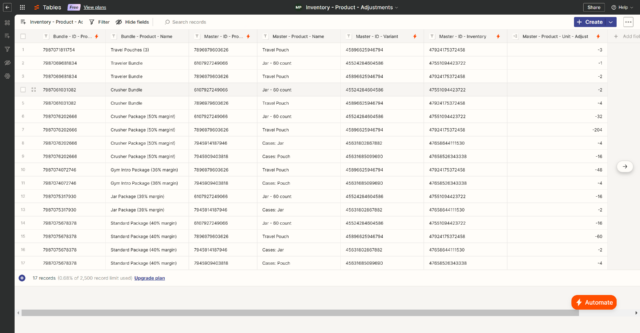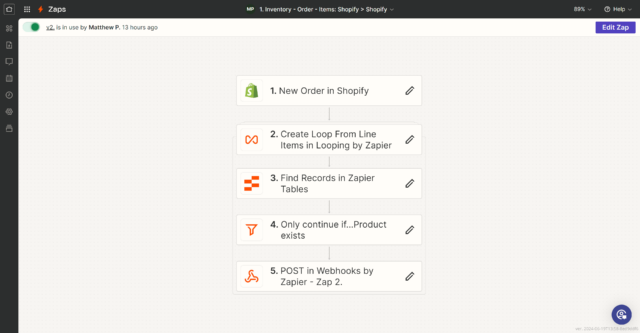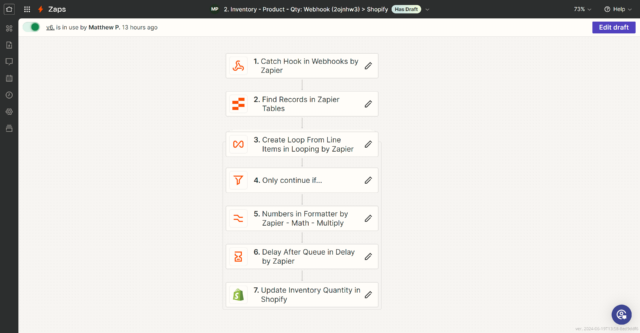This post is going to outline my solution to a problem that I could not find a great solution for after perusing countless Shopify Community posts, Reddit posts, and other web forums. Nor could I find an app that did exactly what I wanted. So today I'm going to share my solution with the hopes that it helps others who have been on a similar hunt.
I shared this solution on the Shopify Community Forum — so feel free to ask questions on that post and read what others have to say about the solution.
USE CASES:
- You need to stop using Shopify Bundles because it doesn't work with your subscription app, doesn't allow you to create draft orders, forces you to charge taxes on bundles (if any products in the bundle are taxable), or doesn't play nice with your shipping profiles / apps. This solution allows you to effectively create “fake bundles” as regular products, and then deduct the appropriate inventory quantity from each product it contains.
- You sell print on demand or made on demand products that share inventory across multiple products. For example, if you have 200 t-shirt designs that all pull from the same quantity of White T-shirts, Blue T-Shirts, etc. This solution would let you sell any design on top of a Size Large White T-Shirt and have it deduct 1 unit of inventory from your “Large White T-Shirt” inventory count.
- You sell products that include parts that are separately sold. For example, a set of dishware that includes 4 large plates, 4 small plates, and 4 bowls — which are also separately sold products.
- You sell the same product marketed to multiple audiences in your store. For example, a piece of exercise equipment that you want to include in both your Men's and Women's Collections, but created separate Products for so that you can use unique images and verbiage for each.
- You've created a new product for an advertising campaign that you're driving traffic to, but still want to leave the old product visible in your store at its retail price. This solution can deduct inventory from that old product.
PROS / CONS:
- This solution works best for smaller stores with a limited number of products sharing inventory. It might become cumbersome to set this up for hundreds or thousands of products.
- It requires a 3rd party service, Zapier, to power the solution (although you could probably also use Make, Mesa, or other automation platforms to accomplish the same thing). Zapier requires a paid plan (min $19.99/month) to connect to Shopify, so unfortunately the free tier won't work for this solution.
- The scenario I outline below doesn't effectively track inventory of the “Fake Bundles” — it just tracks inventory of the products within the bundles. We could have created a sync between the bundle inventory and the product inventory, but it wasn't necessary for our particular setup. However I just wanted to make you aware of that gap in the process so that you can plan ahead for it with your Zap setup.
THIS WAS OUR PROBLEM:
My client offers one product, an energy-boost vitamin, that comes in either a Travel Pouch (5 units) or a Jar (60 units) — so effectively two products that we needed to track inventory for. However he sells those two products in various bundles such as 3 Pouches, 1 Jar + 2 Pouches, 2 Jars + 4 Pouches, etc. He also has a wholesale collection, which again, are the same two products, but sold as bigger bundle options at wholesale prices.
As each of those retail and wholesale bundles were sold, we needed to deduct the appropriate amount of inventory from the two master products (Travel Pouch & Jar). Shopify Bundles initially did the trick for us, but we quickly ran into the limitations I mentioned earlier of not working with our subscription app, not working with draft orders, etc.
I researched Shopify Apps that could sync inventory, but none could do the exact setup we needed, and others had like 1.5 Star reviews, so I couldn't risk building our entire inventory process around them.
THIS WAS OUR SOLUTION:
I got rid of Shopify Bundles app and converted each former bundle into a regular product which I call “fake bundles”. These fake bundles have the same photos, descriptions, price, and include the same number of products as my previous Shopify Bundles — they're just not technically bundles. They're technically regular Shopify products — which means they'd place nice with my subscriptions app, draft orders, shipping, and I'd have easy control of whether to charge taxes on the wholesale bundles.
From there I set up Zapier automations that deducted the appropriate amount of inventory from our master products for each “fake bundle” sold.
HERE'S AN EXAMPLE OF WHAT THAT LOOKS LIKE:
1) Customer orders Products A & B
2) Zapier deducts inventory count from Products C & D.
We need to take into consideration the quantity ordered of Products A & B.
RULES:
For every Product A ordered, Zapier deducts:
-3 units of Product C
-2 units of Product D
For every Product B ordered, Zapier deducts:
-1 units of Product C
-2 units of Product D
EXAMPLE SCENARIO:
Customer orders:
+2 of Product A
+3 of Product B
Zapier should deduct:
-9 units of Product C
-10 units of Product D.
WHAT MY ZAPIER SETUP LOOKED LIKE:
We ended up creating two Zaps and a Zapier Table which contained the relationships between the Product IDs that needed to share inventory.
Zap Table:

Zap 1:
- Loops thru each line item in the Shopify Order
- Searches if there is a matching record in the Zapier Table
- Filters for if record found
- Webhook to post data to Zap 2
- Zap 1 uses 1 Task per order line item that reaches the last step

Zap 2:
- Triggered by webhook from Zap 1
- Finds the matching records in the Zapier Table for the 1 Product ID (Bundle) to get the Master Product info
- Loops thru each of the returned records
- Filter to check the data from the Zapier Table record is complete (product, variant, adjustment)
- Formatter to perform math (multiply)
- Delay for a few seconds to space out the inventory updates to Shopify
- Shopify inventory updated
- Zap 2 uses 1 Task per product inventory update that reaches the last step

CONCLUSION:
I hope this post helps you discover a new way to sync inventory between Shopify products and/or solve problems you may have been experiencing with Shopify Bundles.
If you have any questions about our process, feel free to ask below and I'll do my best to respond. Please note that literally EVERY setup is going to be different, so it may be difficult to troubleshoot yours on a forum.
Alternatively you can reach out to my agency Ideas Focused if you'd like us to build you a similar system with Zapier.
Good luck!

